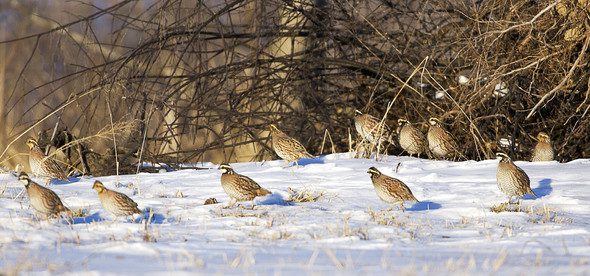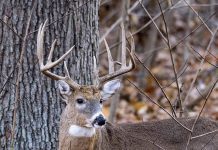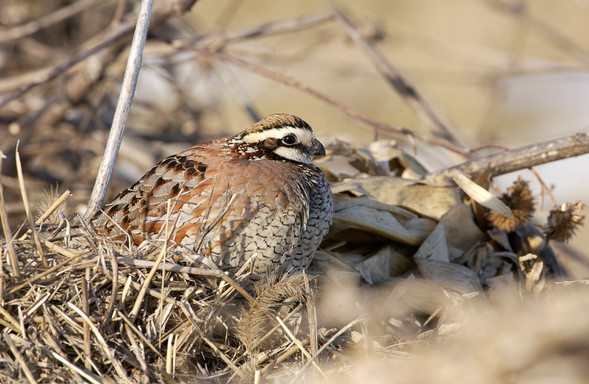Covey survival is tested during snow and cold snaps
KANSAS CITY, Mo. – The little brown game bird that whistles “bob white” in Missouri’s summer pastures is technically called the northern bobwhite quail. But despite the northern name, they struggle to survive harsh winter weather. Winter finds bobwhite quail dodging predators and searching for food in places with grassy, weedy, and woody cover. But as winter progresses into a new year, there is less quality cover and food available. Stress from snow and cold can kill quail and eliminate coveys. The Missouri Department of Conservation (MDC) offers some winter habitat suggestions for property managers seeking to boost bobwhites.
When evaluating winter habitat, remember that food sources and cover from weather and predators are two different things. Rarely does a quality food source also provide good winter cover, said Frank Loncarich, MDC wildlife management biologist.
“Good quality winter cover must provide some thermal protection and overhead cover,” Loncarich said. “We’re talking about thickets of shrubs such as wild plum, rough-leaved dogwood, and blackberry. They must be open enough at ground level for quail to run around under, dense enough on top to provide some protection from snow and ice accumulations, and small enough that quail can explode from them in all directions if predators threaten. Ideally, we want this type of winter escape cover near quality food resources.”
Food is critical for winter survival and good quail health going into the summer nesting season.
“Food resources can be native seeds in diverse herbaceous habitat or a variety of grain crops near covey hangouts,” he said. “This speaks to the importance of continuous usable space with all the food and cover components necessary for quail survival in close proximity. Whether one has native food resources, grain crops, or food plots, the real bottleneck in winter is food availability. Native seeds and grain foods are at their lowest availability in late winter. Therefore, it is important that abundant food resources are available early in the winter to ensure that birds can build up resources to get them through tough times.”
Grassy fields such as fescue pasture may be too dense for quail to move through and will hold little or no food, or they may be grazed too short to provide any cover. Native grass re-introduction projects or fields in the Conservation Reserve Program (CRP) are also sometimes too dense and lacking useful winter plant foods.

“The recent arctic blast has caused me to very critically evaluate the winter food resources available on the grasslands that I manage,” Loncarich said.
Steps can be taken in spring and summer to improve food resources.
“One of the best ways is to ensure there is a large variety of hard-seed producing forbs that provide quality winter food. Native sunflowers, lespedezas and other legumes, and ragweed come to mind. Planting these in areas devoid of them is a good place to start, or encouraging them with fire, light disking, or grazing. Also, planting grain food plots like milo is a great option.”
Woodlands can also be improved for quail. Those are somewhat open areas with trees, grasses, and forbs mixed together. Making sure woodlands have plant species present that benefit quail in winter can help.
MDC offers private land services that can help property owners with management choices that benefit bobwhite quail and all grassland birds. For more information, visit https://mdc.mo.gov/property. To learn more about bobwhite quail, visit https://short.mdc.mo.gov/Zh6.















